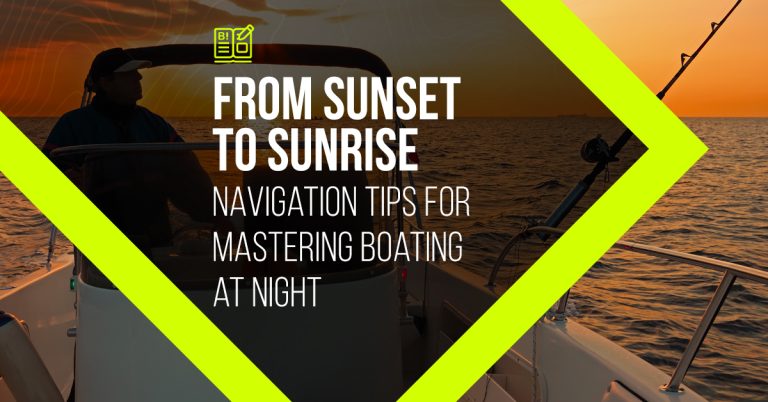 boating at night
boating at night
From Sunset to Sunrise: Navigation Tips for Mastering Boating at Night
Posted on April 8, 2025
Boating at night under a clear night sky is an experience like no other. The cool breeze, the reflection of the moonlight on the water, and the peaceful quiet can make for a magical outing. However, navigating after dark comes with its own set of challenges and risks. To ensure a safe and enjoyable experience, it’s essential to be well-prepared and follow best practices for nighttime boating. Here are some tips to help you navigate safely after the sun goes down.
1. Ensure Your Navigation Lights Are Functioning Properly
Before setting out on your nighttime adventure, check that all your navigation lights are working. This includes the red and green sidelights, the white stern light, and the masthead light (if applicable). These lights are crucial for letting other boaters know your position, direction, and whether you’re anchored or underway. Prior to boating at night, in addition to checking that your navigation lights physically turn on, it’s important to also check all the functionality of your remote control options, both wired and/or wireless. Having a hybrid solution (wired and wireless) for remote control of your lighting is a great way to insure against any potential issues that might arise with either your wired or wireless remote control.
2. Equip Your Boat with Additional Lighting
While navigation lights are mandatory, additional lighting can significantly enhance your visibility and safety. Consider installing searchlights, spotlights, or floodlights to illuminate your surroundings. Personal lighting such as handheld flashlights or headlamps are also useful for tasks on deck. However, avoid using bright lights that can impair your night vision or that of other boaters. If you have a need for additional lighting solutions, take a moment to peruse both the marine searchlight options and the Personal Lighting solutions available via ACR Electronics’ line of marine lighting products.
3. Slow Down and Maintain a Safe Speed
At night, visibility is reduced, and it can be challenging to judge distances accurately. Slowing down gives you more time to react to any obstacles, other vessels, or sudden changes in conditions. A safe speed is one that allows you to stop within the range of your vision, ensuring you can maneuver safely around any potential hazards.
4. Use Your Radar and GPS
Modern navigation technology can be a lifesaver when boating at night. Your radar can help you detect other vessels, landmasses, and obstacles that may not be visible to the naked eye. GPS systems provide accurate location data and can help you stay on course. Ensure you’re familiar with how to use these devices before heading out and keep them updated with the latest charts and maps.
5. Maintain a Proper Lookout
Even with all the technology at your disposal, there’s no substitute for a vigilant lookout. Assign someone on board to keep a continuous watch for other boats, buoys, floating debris, or unlit objects. Having multiple sets of eyes scanning the water can significantly reduce the risk of collision.
6. Stay Clear of Busy Channels and Shorelines
Boating at night can be more challenging in areas with heavy traffic or near the shore, where obstacles are more common. Whenever possible, steer clear of busy channels and areas close to land. If you must navigate these areas, do so cautiously, and be extra aware of your surroundings.
7. Communicate with Other Boaters
Good communication is key to avoiding accidents on the water, especially when boating at night. Use your marine radio to stay in touch with other vessels, and make sure your crew knows how to use it as well. If you’re in a situation where you’re unsure of another boat’s intentions or route, don’t hesitate to make contact and clarify.
8. Check the Weather Forecast
Weather conditions can change quickly, especially at night when visibility is low. Before setting out, check the weather forecast for the area you’ll be boating in. Pay attention to wind speeds, wave heights, and any warnings for storms or fog. If conditions seem unfavorable, it’s best to postpone your trip for another night.
9. Know Your Route and Have a Backup Plan
Planning your route in advance is crucial for nighttime boating. Familiarize yourself with the area, including any potential hazards, and plot your course using reliable charts. Have a backup plan in case you encounter unexpected obstacles or if the weather takes a turn for the worse. Knowing where you can find safe harbor in an emergency is also essential.
10. Be Prepared for Emergencies
No matter how well you plan, emergencies can still happen. Make sure your boat is equipped with all the necessary safety gear, including life jackets, a first aid kit, flares, a fire extinguisher, an emergency beacon such as an EPIRB or Personal Locator Beacon (PLB), and a fully charged radio. It’s also wise to let someone on shore know your plans, including your expected return time, so they can alert authorities if needed.
Boating at night can be an incredibly rewarding experience, offering a unique perspective on the water and a sense of tranquility that’s hard to find during the day. However, safety should always be your top priority. By following these tips and always being well-prepared, you can enjoy the beauty of the night while ensuring a safe and successful journey.
If you’re interested in further education on this topic, the BoatUS Foundation offers a free online boating safety course that covers a wide range of topics, including nighttime navigation.